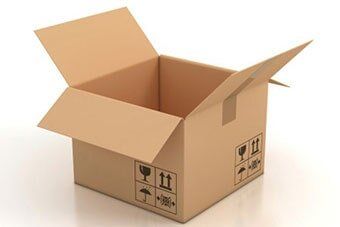Packing Tips in Salinas, CA
Serving Monterey, San Benito and Santa Clara Counties!
Types of Boxes

- 1.5 cu. ft. Use for heavy or dense items including books, records, shoes, canned goods, kitchen canisters, small appliances and hand or power tools.
- 3 cu. General-purpose size. Good for toys, lampshades, pots and pans, kitchen utensils, etc.
- 4.5 and 6 cu. ft. For large, lightweight items such as pillows, bedding and toys. Do not overload these moving boxes.
- Stand-Up Wardrobe Equipped with a bar for hanging clothes, curtains and draperies. The bottom is not designed to support weight; do not pack other items in the bottom of these cartons. Lay-down style wardrobe moving boxes are also available.
- Dish packs Specially designed with available cell dividers for transporting dishes, glasses, bowls and other kitchenware. Also, good for lamps, small pictures, knick-knacks and light appliances.
- Mirror Boxes Telescoping, large and small sizes. Provides extra protection for mirrors, large pictures and glass tabletops.
- Mattress Bags Twin, Full, Double and Queen/King sizes.
- Custom Crates Wooden crates can be custom-built in various sizes. These crates are ideal for marble, large glass table tops, chandeliers, antiques, statuary, trophies and other large, bulky or delicate items requiring extra protection.
- Padding Provided for furniture and larger items. All non-packed or crated items will be padded using the highest quality materials available on the market today.
Pack for Success
- Marble or glass tabletops, heavy wall ornaments and mirrors 40" x 60" or larger
- Pool table
- Bulky, fragile items like large trophies, statues, chandeliers, etc.
- Empty drawers of breakables, or non-transportable items that would puncture or damage other items.
- Keep all parts or pairs of things together - for example, curtain rod hangers, mirror bolts, and other small hard-ware items should be placed in plastic bags and taped securely to the article to which they belong.
- Pack small, fragile, individually wrapped items separately or a few together in small boxes, cushioning with crushed or shredded paper. Place small boxes in a single large box, filling in spaces with crushed paper.
- Put a special mark (the number 1, or the letter A) on cartons you want to unpack first at your destination.
What Not to Pack
- Nail polish remover
- Paints and paint thinners
- Propane cylinders
- Automotive repair and maintenance chemicals
- Radio-pharmaceuticals
- Matches
- Lighter fluid
- Gasoline
- Fireworks
- Oxygen bottles
Labeling Hints
- Use a broad, felt-tipped marker.
- Clearly mark the contents and the room it will be placed in.
- Indicate "FRAGILE" on delicates; "THIS END UP" where appropriate.
- If available, include the bill of lading number from your moving company on every box.
- As you finish with each moving carton, list the contents on the side of the carton (for easy viewing while stacked) and in a special notebook. You might want to number and/or code the moving cartons as well.
- Indicate your name and the room to which each moving carton should be delivered at destination. Tape a sign on the door of each room at destination corresponding to the carton labels so movers can get the cartons into the proper rooms quickly.
Tips From the Pros
- Start with out-of-season items. Next, pack things used infrequently. Leave until the last minute things you'll need until moving day.
- Empty drawers of breakables, non-transportable items that would puncture or damage items while moving.
- Pack similar items together. Do not pack a delicate china figurine in the same moving carton with cast-iron frying pans, for example.
- Keep all parts or pairs of things together. For example, curtain rod hangers, mirror bolts, and other small hard-ware items should be placed in plastic bags and taped or tied securely to the article to which they belong.
- Wind electrical cords, fastening them so they do not dangle.
- Wrap items individually in clean paper; use tissue paper, paper towels, or even facial tissue for fine china, crystal and delicate items. Colored wrapping paper draws attention to very small things that might otherwise get lost in a moving carton. Use a double layer of newsprint for a good outer wrapping.
- Place a two- or three-inch layer of crushed paper in the bottom of cartons for cushioning.
- Build up the layers, with the heaviest things on the bottom, medium-weight next, and lightest on top.
- As each layer is completed, fill in empty spaces firmly with crushed paper and add more crushed paper to make a level base for the next layer, or use sheets of cardboard cut from moving cartons as dividers.
- Cushion well with crushed paper; towels and lightweight blankets may also be used for padding and cushioning. The more fragile the item, the more cushioning needed. Be sure no sharp points, edges or rims are left uncovered.
- Pack small, fragile, individually-wrapped items separately or a few together in small boxes, cushioning with crushed or shredded paper. Place small boxes in a single large box, filling in spaces with crushed paper.
- Avoid overloading moving cartons, but strive for a firm pack that will prevent items from shifting; the cover should close easily without force, but should not bend inward.
- Seal moving cartons tightly with tape except for those containing items that must be left open for the van line operator's inspection.








